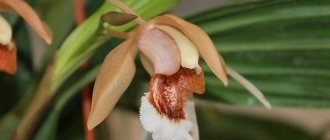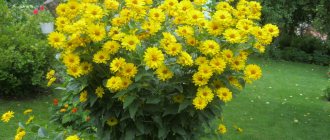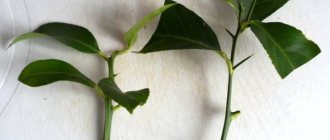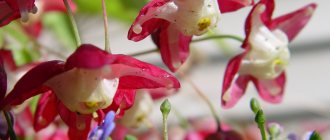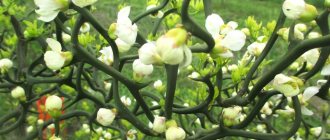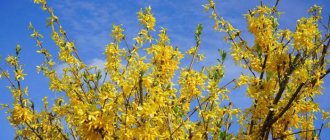Author: Natalia Category: Garden plants Published: February 01, 2019Republished: February 01, 2019Last edits: January 13, 2021
- Growing conditions
- Moorish bindweed (Convolvulus sabatius = Convolvulus Mauritanicus)
Garden bindweed belongs to the genus Convolvulus (lat. Convolvulus) of the Convolvulaceae family. There are more than 250 plant species in this genus, the main unifying feature of which is the shape of the flowers. Representatives of the genus grow in areas with temperate and subtropical climates. The scientific name of the genus comes from the Latin verb meaning “to curl up,” and explains the need of many species to twine their stems around other plants, using them as support. The most common among bindweeds is field bindweed - the same bindweed that affects agricultural crops and private gardens.
Planting and caring for bindweed
- Flowering: from early June to autumn.
- Planting: sowing seeds for seedlings - in March, planting seedlings in the garden - in mid-May.
- Lighting: bright sunlight or partial shade.
- Soil: permeable, preferably loamy.
- Watering: moderate but regular, especially during drought. The most moisture-loving species is Moorish bindweed.
- Fertilizing: if necessary, add wood ash under the bush or add a solution of a tablespoon of Nitrophoska and a tablespoon of Agricola for flowering plants in 10 liters of water at a consumption of 3 liters of fertilizer per 1 m² of area.
- Garter: it is advisable to install supports for the plant immediately when planting seedlings: the sooner you guide the plant along the support, the easier it will be for you to care for it.
- Pruning: at any time, if necessary.
- Reproduction: the plant reproduces well by self-sowing. To prevent bindweed from infesting the entire garden, remove its flowers immediately after wilting, so that the ripened seeds do not fall to the ground.
- Pests: aphids.
- Diseases: powdery mildew.
Read more about growing bindweed below.
Care
Bindweed is easy to care for. It should be watered so that the soil remains moderately moist as much as possible. During periods of drought, the leaves wither and droop, but after timely watering, turgor is restored. Every 2 weeks, complex mineral fertilizer is added to the irrigation water. For abundant flowering, remove faded flowers. If there is a desire to get self-seeding, some of them are left for tying and sprinkling seeds.
Bindweed tricolor Tricolor
Botanical description
The life forms of bindweed are numerous. In nature, annual bindweeds and perennial bindweeds are found. They can be herbaceous plants or subshrubs with erect or creeping stems up to 4 m long. Convolvulus has creeping rhizomes with thread-like roots. The leaves of plants of this genus are usually simple, entire, alternate, petiolate, lobed or toothed, arrow-shaped or heart-shaped. The flowers, which open early in the morning, are located in the axils one or three at a time or are collected in inflorescences. The corolla of the flowers is bell-shaped or funnel-shaped with barely pronounced lobes. The fruit is a capsule with seeds that remain viable for 2-3 years.
Features of bindweed
Bindweed has a wide variety of life forms. In natural conditions, you can meet bindweeds, which are both perennials and annuals. They are subshrubs or herbaceous plants, their creeping or erect shoots reach 400 cm in length. Creeping rhizomes have thread-like roots. Alternately arranged whole simple leaf blades have petioles. They have a heart-shaped or arrow-shaped shape, and can also be jagged or lobed. The opening of flowers is observed in the early morning. They are placed in the axils in 1, 3 pieces or in inflorescences. The shape of the corolla is funnel-shaped or bell-shaped, while the blades are very slightly pronounced. The fruit is a capsule containing seeds, which remain viable for 2 or 3 years.
Ideal Living Fence With Flowers


